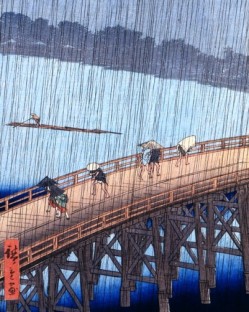When I thought about doing this daily practice of writing, I knew I wanted to do shorter poems and that I wanted some discipline, as in a form to follow.
I thought about the many Japanese forms that I enjoy reading and writing. The haiku is the form most people are familiar with, and it is a form that gets far too little respect in the Western world,
People know that form as three lines of 5-7-5 syllables. But that’s an English version, since Japanese doesn’t have syllables.
The term waka originally encompassed a number of differing forms including the tanka (“short poem”) and chōka (“long poem”), sedōka (“memorized poem”?) and katauta (“poem fragment”). Of those, only the tanka has really survived.
If you look at those forms, you notice that the numbers 5 and 7 are the heart of all of them. The katauta is 5-7-7 and the shortest type of waka. The chōka counts out at 5-7-5-7-5-7…5-7-7 . And the sedōka at 5-7-7-5-7-7 is composed of two sets of 5-7-7.
The tanka form consists of five units (often treated as separate lines when romanized or translated) usually with the following pattern of 5-7-5-7-7. Even in that short form, the tanka has two parts. The 5-7-5 is called the kami-no-ku (“upper phrase”) and the 7-7 is called the shimo-no-ku (“lower phrase”).
For my invented form, ronka, there are 5 lines, each having 7 words without concern for syllables.
Traditionally tanka has had no rhyme, and rhymes, even accidental ones, were considered faults in a poem.
My own ronka will focus on observations of the day as seen in the outside world and the inside worlds of dwellings and the mind.
A principle of haiku is to use seasonal words to show rather than tell. Even in English haiku, cherry blossoms, rather than “spring” or April would be preferred.
Haiku also don’t include the poet or people as frequently as we do in Western poetry.
I plan to follow those principles as well.

6 thoughts on “The Ronka”